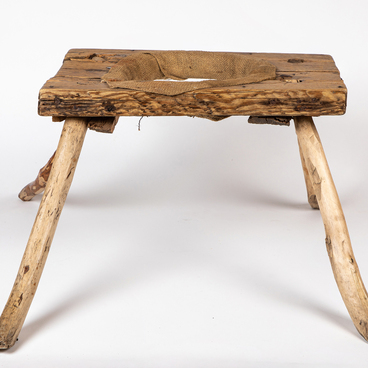The collection of the Sheltozero Veps Ethnographic Museum named after Rurik Petrovich Lonin features butterfly earrings made of white pearls, which were donated to the museum in 1997 by Yulia Vasilyevna Kemlyakova, a resident of the village of Sheltozero. Along with the earrings, a small wooden box of blue-green color, in which they were stored for many years, was also given to the museum.
Pearls are a historical symbol of the Russian North. They play a huge role in the image of Karelia and the festive Karelian costume. Headdresses were abundantly decorated with them, and luxurious jewelry was created. The cherished dream of any girl was a pearl necklace, earrings or a tiara. Butterfly earrings were assembled on horsehair using small pearls or beads. The design of such earrings required a special brass or copper base. In the central part of the earrings there was a teardrop-shaped pendant, braided with an openwork mesh; openwork wings were attached to the right and left of it.
Butterfly earrings made of river pearls or freshwater loose pearls were often a part of the bride’s dowry. It is quite possible that the earrings presented in the museum’s collection were part of the dowry, because they had been kept for so many years in the Kemlyakov house and passed down from generation to generation.
A couple of centuries ago, three hundred rivers in Karelia running throughout the territory, from south to north, were rich in freshwater pearls. At the bottom, among the stones, there lived bivalve mollusks, whose official name in zoology is the freshwater pearl mussel. The needlewomen made extraordinary things from the pearl mussels, among which were hats, earrings, and clothes decorated with Karelian river pearls. Pearls of various sizes were used — both tiny, like beads, and ones the size of a pea. But in general, Karelian pearls are small.
Today, pearls are no longer hunted in Karelia:
pearl oysters are an important part of the ecosystem and they are under
protection. An adult mussel passes water through its gills and processes
microscopic algae: for a pearl mussel, this is both food and material for
growth. Gradually, a delicate nacre mantle is formed inside the shell. Sometimes grains of sand get into it, over time they also get covered with
nacre and turn into pearls.


